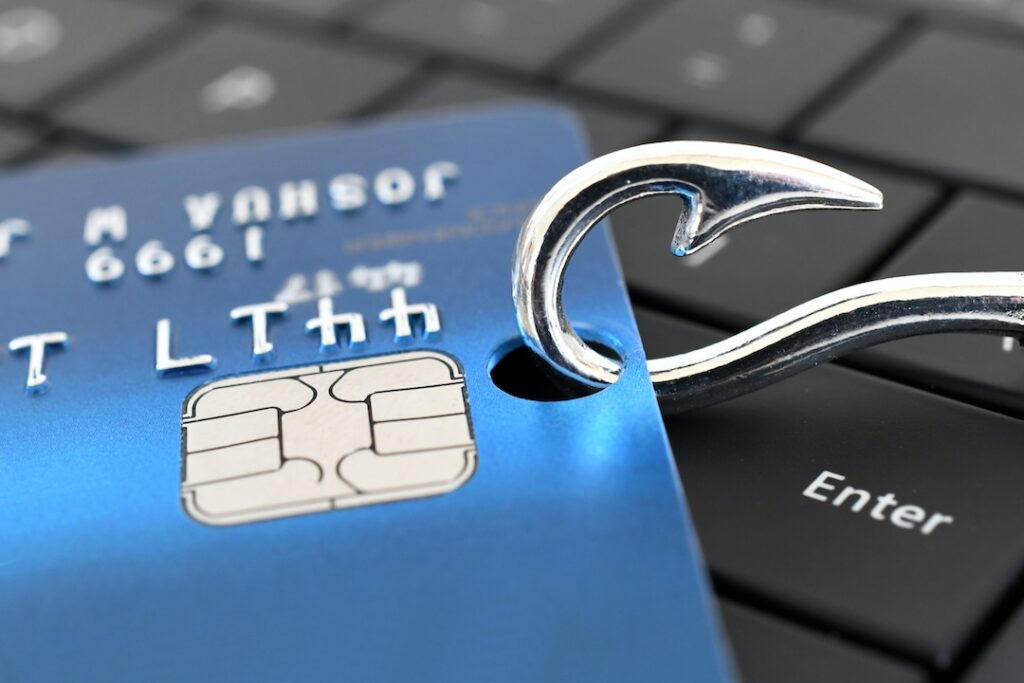Moving into 2022, cybersecurity is a hot topic. With hacking and data breaches on the rise, it is more important than ever for individuals and businesses to protect their digital information. You may think phishing is a hacking tool of the past, but hackers and cybercriminals still use phishing and social engineering to steal personal information.
What is Phishing?
Phishing is a type of online attack that uses fraudulent emails and websites to trick people into revealing their personal information, such as passwords, social security numbers, or credit card numbers. The goal of a phishing attack is to acquire sensitive information that can be used for financial gain or identity theft.
Phishing attacks rely on social engineering to trick people into revealing their personal information to hackers.
Top 5 Phishing Threats
1. Email Phishing
Email phishing is the number one threat to businesses and individual users alike. This type of attack involves sending fake emails to unsuspecting victims in an attempt to steal their personal information or login credentials.
Emails that appear to be from legitimate sources but contain malicious attachments or links can often be very convincing, which is why it’s important for users to be aware of the common signs of a phishing attack.
These signs include:
- An unusual sense of urgency
- Attachments from unfamiliar sources
- Requests for personal information
- Discrepancies in email addresses or websites
2. Mobile Device Phishing
As more and more people use their mobile devices for online banking and shopping, mobile device phishing has become a major threat. This type of attack involves sending fraudulent text messages or installing malicious apps that trick users into giving up their personal information.
It’s important to be aware of the red flags of a mobile device phishing attack, such as unsolicited text messages or emails from unknown senders and unexpected requests for personal information.
3. Social Media Phishing
Social media phishing is a type of attack that targets users’ social media accounts. Hackers often use fake profiles or hacked accounts to lure users into giving up their login credentials or personal information.
Social media phishing can be especially dangerous because it often involves deception and manipulation, making it difficult for users to detect a scam.
4. Spear Phishing
Spear phishing is a more targeted form of phishing that specifically targets individuals or businesses. Hackers use spear-phishing attacks to gain access to sensitive information or to infect networks with malware.
Spear phishing attacks are often very sophisticated and can be difficult to detect. Businesses need to put in place strong security measures to protect themselves from spear-phishing attacks.
These security measures include:
- Encrypting all sensitive files and information
- Using multi-factor authentication
- Using antivirus software to check unfamiliar links
5. Whaling
Whaling is a type of phishing attack that targets high-level executives and business owners. Hackers use whaling attacks to steal sensitive information or to blackmail victims into paying ransom money.
Whaling attacks are often very successful because they target individuals who are less likely to be aware of the dangers of phishing. Businesses need to put in place strong security measures to protect their employees from whaling attacks.
How to Protect Yourself and Your Business from Phishing Threats
The best way to protect yourself from phishing attacks is to be aware of the common signs of a scam and to never provide your personal information or login credentials to unknown sources.
The Common Signs of Phishing Scams
- Suspicious links you don’t recognize
- Requests for account information
- Generic greetings (like “Hello Customer”)
Businesses need to put in place strong security measures to protect themselves from phishing attacks. This includes implementing email spam filters, requiring multifactor authentication, training employees on how to identify phishing scams, and using secure passwords.
If you think you may have been the victim of a phishing attack, contact your bank or credit card company immediately and change your login credentials. You can also report the attack to the Federal Trade Commission (FTC) at ftc.gov/complaint.
Phishing is still a major threat in 2022, so make sure you know how to protect yourself and your business from these dangerous attacks.
Your IT provider can help protect you from phishing through training and anti-malware programs. Contact us today for a free consultation for your business.


